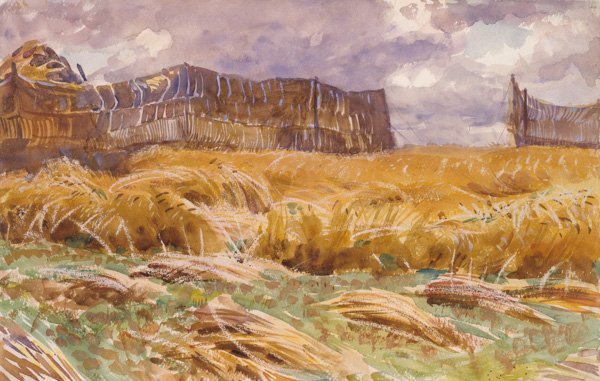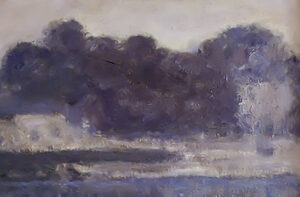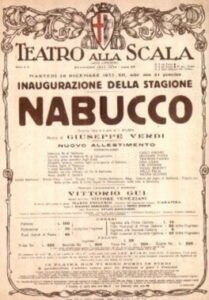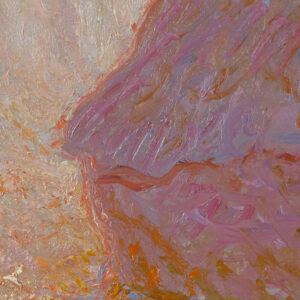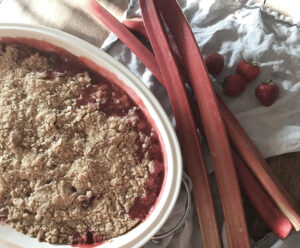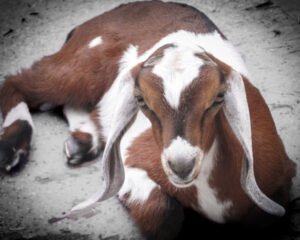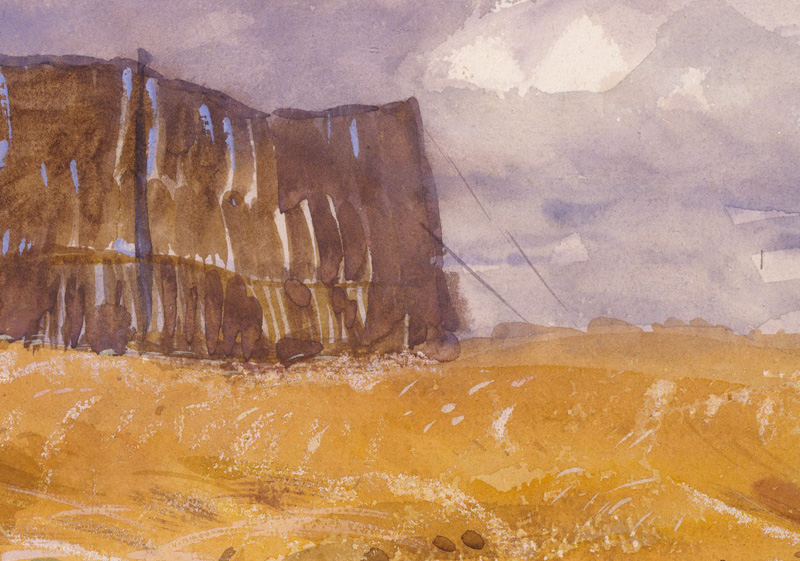
How to Own a Bull for
More Than Thirty-Eight Seconds
An Introduction to Livestock Fencing

You may have heard that “good fences make good neighbors.” This is particularly true when you are hoping to keep a bull and your neighbors are hoping you will keep it on your own property. For longer than thirty-eight seconds. More on that in a moment.
The famous saying is, of course, often attributed to Robert Frost, who used it in a poem. It may be debated whether he meant it literally or satirically (in my experience, the answer is, or ought to be, literally). But the phrase pre-dates Frost; he merely borrowed an old aphorism about an old thing: fences. Fences have played an important part in human interactions since time immemorial. They demark property, protect privacy, and facilitate diplomacy. And the civility that results from being a good steward of one’s property is a happy by-product of good fencing. But the original goal was quite practical: keeping one’s fresh milk or future meat from wandering too far from home. My fence-building experience confirms that goal hasn’t changed.
I would like to claim that my qualifications as a fence builder are ancestral. My last name, Hanning, is the Scottish word for the ancient occupation of fence building (or so I have been told). And yes, I have walked on millennia-old stone fences while moving sheep in Crieff, Scotland. But my actual qualifications are rooted in the even more ancient art of trial and error. Mostly error. I have made many mistakes and wasted countless hours of my life by not following the time-tested wisdom of fence building outlined in this article.
Perhaps my most impressive act of learning through error occurred shortly after I became the proud owner of a beautiful Dexter-cross bull. We picked up the young bull and brought him to the paddock that I had spent weeks clearing and fortifying in anticipation of his arrival. He was in my possession for less than thirty-eight seconds before escaping into the wild and bolstering the feral bull population of middle Tennessee. He bolted out of the trailer to the thunderous applause of my children who were gathered to witness (what we assumed would be) the first of our family’s many small victories in the game of cow ownership. It quickly turned into a much more valuable lesson about dad’s vincibility and his ignorance of the bovine arts. “Where did the bull go?” was not a question I expected to hear that afternoon. Neither was I expecting to spend hopeless hours tracking the beast, encumbered by the realization that I had just cost my family a year’s worth of meat. And, of course, my neighbors were not especially pleased.
I learned several valuable lessons that day. First, ancestry might help, but ignorance is generally more potent than heritage; the fact that you feel you are intrinsically up to a task does not mean you are, so do your homework. Second, the more time you spend building a fence, the longer it will last, but no amount of time can make up for having the wrong fence for the job. Third, fence-building, like any agrarian art, has wide variability in execution but remarkable consistency in key requirements, based on the type of livestock one is dealing with. Finally, fence-building is an indispensable skill for livestock owners to possess, for the health and safety of animals as well as for the sanity and wellbeing of their owners (and neighbors).
Below is a very brief outline of the general considerations to take into account when building fences as well as a basic list of the types of fences used for cattle, goats, and sheep. For a more in-depth treatment, we highly recommend visiting your state’s Extension Service or local university’s Agriculture Department, which often produce excellent resources specific to your area. For example, the University of Tennessee Extension Service provides a helpful fence building guide: Planning and Building Fences on the Farm. Another excellent resource is Josh Draper’s YouTube channel, Stoney Ridge Farmer. Draper has tested many fence systems and regularly invites experts from various companies to explain the benefits of their systems. Plan well, build well, and enjoy the fruits of well-managed livestock.
General Considerations
Before setting pen to paper, or posthole digger to dirt, consider the following:
Permanence
Will your fence be permanent, semi-permanent, or temporary? While ultimately the fence’s function will be the same (keeping animals you want in and predators you don’t out), the length of time you need the fence to last is an important consideration.
Permanent: At this highest level of commitment, be sure your fence is where you want it. Ask yourself: Will it inadvertently affect your movement through the land? How will it affect future crops, water flow, etc.? Will the enclosed space be large enough to accommodate the number of animals you plan to have?
Semi-permanent: This lower level of commitment is best if you intend to relocate your enclosure seasonally or more often.
Temporary: Moved daily or weekly to allow for intensive grazing and healthy pasture rotation.
Access
Unless you plan on permanently trapping your animals, you will need to strategically place gates and chutes along the fence line. When possible, work with the animals’ natural herding instinct. Make the gates big enough to accommodate several animals, and place them strategically to make less work for yourself, and lessen stress on the animals.
Type (or Types) of Livestock / Predators
What kind of animals are you keeping in? Cattle? Sheep? Goats? Swine? Chickens? Ducks? All the above?
What kind of animals are you keeping out? Coyotes? Foxes? Wolves? Weasels?
Grouping
By Sex: Will you be separating males and females during certain seasons? Male livestock when separated from females can be both aggressive and amazingly crafty. They can also be dangerous to each other. Fortified fencing — either with stronger posts, wire, or electrical options — isolation, distance away from each other, and visual blocks can all help.
By Age: Will you have a separate area for young animals? Fencing is often designed for fully grown livestock. Newborn and young stock often require additional fencing, especially as they become less dependent and less willing to listen to their mothers.
Budget
How much are you willing to spend? At the risk of pointing out the obvious, the more permanent the fence is the more expensive it usually will be. But factors including maintenance, future adaptability and expansion can also affect overall costs.
Aesthetics
How important is the look of the fence to you? When determining the type of fencing you want to put up, you may choose any two of the following qualities: cheap, strong, or attractive. Usually, you can only pick two of the three options. You can build a cheap, strong fence, but it will not be pretty. You can build a strong, attractive fence, but it will not be cheap. Consider which sections are more visible than others and are worth the investment of a beautiful fence.
Special Considerations
Cattle
In general, cattle require a strong overall fence, with well-designed chutes and gates to properly and safely move them. Containing them within a specific grazing area is less difficult, but the overall paddock or field should be well-fenced to avoid frustrating losses.
Permanent Fencing
Wood: Three- or four-panel board fencing on 8- to 12-foot spacing makes a sturdy and good-looking fence that is easily repaired. Many farms and homesteads run the front-facing section of their fence this way because it looks nicer.
If you choose this option, follow these tips:
Make sure the first run is high enough off the ground to prevent wood-destroying insects from damaging the fence but close enough to the ground that small or young animals can’t escape.
Bury or pound in blunt posts at least three feet deep and cut their tops off at an angle to keep moisture from collecting.
Only use outdoor rated or treated lumber and outdoor-rated or galvanized screws, nails, and hardware.
Make the fence at least 54 inches high. This height is the conventional wisdom and is nearly gospel to most ranchers. Some people prefer to run a top line of barbed wire or electric fence on the inner rim as an extra deterrent to more stubborn animals.
Wire: Both barbed wire and high-tensile wire are popular choices. Typically, these fences include at least four runs of wire, with the top wire a minimum of 54 inches high (Note: Three-wire fences, though popular and cheaper, are typically ineffective – their spacing is too large to contain any determined cow.).
Things to keep in mind with wire fencing:
- Both barbed-wire and high-tensile wire fences require very strong anchor points at the opposing ends of the runs. The traditional “H” brace for ends and corners is the norm, and, if built right, can last generations. Use at least 6-inch to 8-inch posts to ensure that your investment of time is not wasted.
- The key to getting these fences right is understanding that the wire must pull straight between posts to maintain proper tension. Anywhere there is a bend in the line, it must be properly fortified.
- High-tension wire requires a strong wood or metal post every 40 to 120 feet, with wood or metal droppers every 20 to 30 feet to maintain line spacing.
- Old fences were frequently built using a large branch as a lever to tie and tighten the fence. Today, hand fence stretchers and in-line ratchet strainers can provide sufficient tension. Tractors, horses, or trucks can also be used to carefully tension the fence. Barbed wire does not typically require as much tension to be effective, but it must have posts (either wood or metal T-posts) every 16-30 feet depending on application Electric lines can be run on both types of wire fences as needed for extra fortification.
Woven Wire Fences: While usually viewed as a more semi-permanent option, rolling, and stretching high quality woven wire fences on permanent posts with “H” braces on the ends and corners can make an attractive and solid fence. Woven wire ranch fencing usually comes in 330-foot long rolls that are available in a huge variety of animal-specific sizes. The gauge of wire and spacing between runs determines its suitability for certain livestock. Red Brand, the largest US manufacturer of this type of fencing, provides a helpful guide to help select the right type of wire.
Typically, the top and bottom wires are of a thicker gauge than the other horizontal and vertical runs. The way the wire is knotted determines rigidity or flexibility. One drawback of woven wire fencing is that it is more difficult to repair than traditional barbed-wire and high-tensile wire fences, which can be re-stretched and patched more easily than woven wire.
Semi-Permanent
Wire and Woven Wire: Barbed-wire or woven wire fencing can be adequately stretched tight and run over long distances using simple T-posts every 12 feet (or 8ft for larger animals) and sturdy posts on the ends and corners. For example, one morning, a few of my kids and I felled some trees and made four 10-foot posts. We dropped these in four 4-foot deep holes where we wanted our end, corner, and gate posts to be, and made sure each post was leaning slightly away from the direction of pull. We then packed the holes tight using a sledgehammer and drove metal T-posts every 12 feet. We secured one end of the field fence to the end post and the other end to our 12-year-old Honda Pilot. After a few adjustments to the angle and a few good revs, the fence was pulled tight against the corner brace. A pack of staples and T-post clips later we finished the 200-foot run of fencing for the new paddock. It will not last a lifetime – and will probably start sagging after a few dozen good rains loosen the corner post – but for a few hours of work, we now have something that will last for at least a few seasons of calving.
Electric: Another great semi-permanent fencing option is three- or four-strand electric wire run on T-posts. If your cows have plenty of food, you can likely get by with just two strands, one at 30 inches and the other at 54 inches. This fence can be set up in a matter of hours and will last an entire season or more.
Follow the manufacturer’s recommendation for properly running and powering the fence. We use all-in-one solar charging units that attach to a T-post. They are expensive, but convenient, and last a long time. Be sure to get one that is rated for your livestock, and has a replaceable battery. Also, do not neglect to ground it well. Depending on the soil, a piece of copper, or clean rebar pounded three or more feet into the soil will give you a great ground.
Finally, label your wire with a warning sign. These systems are powerful, painful, and potentially dangerous, but, if used properly, they are virtually risk-free.
Note: Electric fencing works as a behavioral deterrent, not as a physical barrier. Livestock get shocked and associate the pain with the fence and stay away from it. Until they are trained on the electric fence, they should be supervised to ensure they do not get tangled.
Temporary
The only time a suitable temporary fencing system is appropriate for cattle is when they are being moved for rotational grazing within a larger paddock. In this case, electric poly-wire run on 35-inch-high pigtails is the way to go.
Goats
There is an old story of a farmer who would test if his fences were goat-proof by throwing a bucket of water at it. If any water got through, he would know that his goats could as well. In truth, goats are stubborn, smart, and extremely agile. They can jump and climb and they can open gates. Once free, they will instinctively (and immediately) eat your most valuable crop before anything else. For these reasons, a good fence is extremely important. Bucks in rut tend to be smelly, aggressive, and incorrigible. Plan accordingly. Usually, a small, well-secured pen with fresh water helps. Very young goats (kids) are vulnerable to predation from all sorts of animals. We recommend electric fencing or keeping them in a more secure area until they are a little older.
Permanent Fencing
Wood: For goats, any permanent fencing system must either be unclimbable or block their vision so that they don’t become curious about what is on the other side. Good options include solid wood panels or panel fences with electric wire strung on the inner rim of the fence. The fence should be at least 48 inches tall to prevent the goats from easily jumping them. Alternatively, a dead hedge fence made from stacked and interwoven dried branches works very well.
Wire: Barbed wire and high tensile wire are poor options for goats. The wires would have to be run so closely together that the fence would not be cost-effective.
Woven wire: Woven wire fencing works great, but the openings must be no more than 4×4 inches. Any bigger, and the goats are liable to get their heads stuck in the fence, leading to injury or predation. Holes smaller than 4X4 inches may lead to goats getting their legs entangled in the fence. We have had to reset many broken legs due to poorly sized panels and precocious young goats. Fence manufacturers make 4×4 fencing specifically for goats that is knotted in a way that deters climbing. This fencing, appropriately stretched and constructed —similar to the cattle fencing described above —has served us well over the years.
Semi-permanent & Temporary
Woven wire: The 4×4 woven wire fence stretched on less permanent posts is a great alternative to more permanent solutions. You can even hand stretch the fence if needed. Be aware of sagging wire that goats can jump over and loose spots they might crawl under.
Electric: Several manufactures have electric roll fencing specially designed for goats and sheep. This 48-inch high fencing forms a physical and behavioral barrier that works for most goats. Goats must be trained on the fence to avoid entanglement and injury. Sometimes stubborn goats and young bucks will inexplicably escape with ease. If this happens, they will need repeated shocks from the fence to be deterred from future attempts. Always have the fence “on” when in use. If it is not on, the goats will be more likely to test it, thereby risking entanglement.
Sheep
Like goats, sheep require good fencing, but, unlike goats, they have a stronger herd mentality, and are typically less precocious. As long as they have food and water, sheep are unlikely to leave where the other sheep are. The Bible passage about the sheep and the goats is accurate. Sheep are generally more docile and mild-mannered. The exceptions to this rule are rams in rut, or competing rams. These will battle to the death as a matter of principle and, thus pose a risk to humans. Plan accordingly. Separate rams from each other when required. If an ornery ram keeps escaping, consider making a stronger paddock — or mutton stew.
Permanent
Wood: For sheep, any permanent fencing system must be high enough to deter jumping — at least 40 inches. Blocking sheep’s vision from other, potentially lusher, pastures also helps. The iconic stone fences of the British Isles were all designed for sheep and are typically 36- to 42-inches high.
Good permanent sheep fencing can include stacked stone, solid wood panels, or panel fences with electric wire strung on the inner rim of the fence. As with goats, dead hedge fences work very well, though they may damage the sheep’s wool.
Wire: Barbed wire and high-tensile wire are not good options for sheep. The barbed wire can ruin wool, and the spacing required for high-tensile wire is cost-prohibitive.
Woven wire: Same as goats, see above.
Semi-permanent & Temporary
Woven wire: Same as goats, see above.
Electric: Same as above, with the exception that typically 40 inches is sufficiently high. Finally, sheep are experts at using their horns and will burrow underneath a fence long before they will attempt to jump it. Make sure your fence is tight.
Happily, our bull did eventually return. The good news about poorly made fences, apparently, is that they are just as easy to break into as they are to break out of. But nonetheless, I recommend you follow my advice and not my example. You (and your neighbors) will be glad you did.
